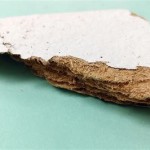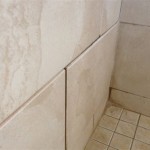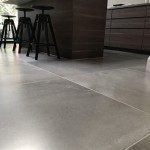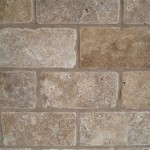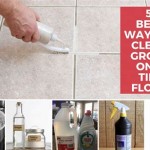How to Remove Tile Glue From Concrete Floor
Removing tile glue from a concrete floor is a common, albeit challenging, task faced by homeowners and contractors alike. Whether renovating an old bathroom, kitchen, or simply replacing damaged tiles, understanding the proper techniques for adhesive removal is crucial. The chosen method will heavily depend on the type of adhesive used, the age of the adhesive, and the condition of the concrete floor itself. Improper removal can lead to damage to the concrete subfloor, creating additional problems and expenses. This article outlines several effective methods for removing tile glue, emphasizing safety precautions and best practices to achieve a smooth, clean surface ready for new flooring.
Before embarking on the removal process, accurate identification of the adhesive type is beneficial. Common types of tile adhesive include thin-set mortar, epoxy mortar, and organic adhesives (mastics). Thin-set mortar is a cement-based adhesive typically used for ceramic and porcelain tiles. Epoxy mortar is a stronger, chemically resistant adhesive often used in commercial or high-moisture environments. Organic adhesives, such as mastics, were more commonly used in the past but can still be found in older installations. Identifying the adhesive type will help determine the most effective removal method and the necessary tools.
Proper preparation is paramount for a safe and efficient adhesive removal process. This includes protecting the surrounding areas, ensuring adequate ventilation, and wearing appropriate personal protective equipment (PPE). Dust and debris generated during removal can be hazardous, so it is important to minimize exposure. Addressing factors prior to removal will contribute to a successful outcome.
Key Point 1: Mechanical Removal Methods
Mechanical methods involve physically removing the adhesive using tools that chip, scrape, or grind the material away. These methods are often the most effective for stubborn adhesives, particularly those that have hardened over time. However, mechanical removal requires caution to avoid damaging the underlying concrete.
One of the most common mechanical removal methods involves using a floor scraper. A floor scraper consists of a long handle attached to a wide, flat blade. This tool allows the user to apply leverage to scrape away the adhesive from the concrete surface. For smaller areas or edges, a handheld scraper can be used. When using a scraper, start by applying firm, even pressure to the blade and push it forward along the adhesive. Work in small sections, overlapping each pass to ensure complete removal. Be careful not to dig the blade into the concrete, as this can create gouges and unevenness.
For more extensive areas or particularly stubborn adhesive, a power scraper or chipping hammer can be used. A power scraper is a motorized version of a manual scraper, providing increased power and efficiency. A chipping hammer, also known as a demolition hammer, uses percussive force to break up the adhesive. When using these tools, wear appropriate PPE, including safety glasses, hearing protection, and a dust mask. Start by testing the tool in an inconspicuous area to determine the optimal setting and avoid damaging the concrete. Move the tool slowly and deliberately, focusing on removing the adhesive without digging into the concrete. Overlap each pass to ensure complete removal. It is crucial to maintain a consistent angle and pressure to avoid creating uneven surfaces.
Concrete grinders equipped with diamond grinding wheels are another effective mechanical removal option. These grinders use abrasive wheels to grind away the adhesive, leaving a smooth, clean surface. Concrete grinders are available in various sizes and power levels, depending on the size of the area and the thickness of the adhesive. When using a concrete grinder, wear appropriate PPE, including safety glasses, hearing protection, and a respirator. Start by selecting the appropriate grinding wheel for the type of adhesive being removed. Begin grinding in a corner or along an edge, using a slow, steady motion. Overlap each pass by about 50% to ensure complete removal. Regularly inspect the grinding wheel for wear and replace it as needed. Be mindful of dust generation and use a vacuum attachment to minimize airborne particles.
After using any mechanical removal method, it is important to clean the concrete surface thoroughly. Use a stiff-bristled brush and a shop vacuum to remove any remaining debris. Inspect the surface for any gouges or unevenness and repair them with concrete patch if necessary.
Key Point 2: Chemical Softening and Removal
Chemical softening methods involve applying solvents or adhesive removers to soften the tile glue, making it easier to scrape away. These methods are often less physically demanding than mechanical removal but require careful selection of the appropriate chemical and adherence to safety precautions.
Various chemical adhesive removers are available, specifically formulated for different types of tile glue. When selecting a remover, carefully read the product label to ensure it is compatible with the type of adhesive being removed and the concrete surface. Some removers are designed for thin-set mortar, while others are formulated for epoxy or organic adhesives. Using the wrong remover may not be effective or could potentially damage the concrete.
Before applying the remover, clean the concrete surface to remove any loose debris or dirt. This will allow the remover to penetrate the adhesive more effectively. Apply the remover according to the manufacturer's instructions, typically using a brush, roller, or sprayer. Ensure that the adhesive is thoroughly saturated with the remover. Allow the remover to dwell on the adhesive for the recommended time, typically ranging from 15 minutes to several hours. This allows the remover to soften the adhesive. It may be necessary to reapply the remover if the adhesive is particularly thick or stubborn.
After the dwell time, test a small area to see if the adhesive has softened sufficiently. Use a scraper to try to remove the adhesive. If it comes off easily, proceed to remove the remaining adhesive. If it is still difficult to remove, allow the remover to dwell for a longer period or reapply it. Once the adhesive has softened, use a scraper to remove it from the concrete surface. Work in small sections, overlapping each pass to ensure complete removal. Be careful not to dig the scraper into the concrete. A plastic scraper may be preferable to a metal scraper to minimize the risk of damaging the concrete.
After removing the adhesive, thoroughly clean the concrete surface to remove any remaining remover residue. Use a mild detergent and water to scrub the surface. Rinse the surface with clean water and allow it to dry completely. This will help prevent any chemical reactions between the remover and the new flooring material.
When using chemical adhesive removers, it is essential to wear appropriate PPE, including safety glasses, chemical-resistant gloves, and a respirator. Work in a well-ventilated area to avoid inhaling fumes. Dispose of used removers and cleaning materials according to the manufacturer's instructions and local regulations.
Key Point 3: Heat Gun Application
A heat gun can be used to soften certain types of adhesives, making them easier to scrape away. This method is particularly effective for older, brittle adhesives that have lost their flexibility. However, caution must be exercised to avoid overheating the adhesive or damaging the concrete.
When using a heat gun, start by setting it to a low or medium heat setting. Do not use the highest setting, as this can scorch the adhesive or damage the concrete. Hold the heat gun a few inches away from the adhesive, directing the heat evenly over the surface. Move the heat gun slowly and deliberately, focusing on softening the adhesive without overheating it. Avoid concentrating the heat on one spot for too long, as this can cause the adhesive to burn or the concrete to crack.
As the adhesive softens, use a scraper to remove it from the concrete surface. The heat will make the adhesive pliable. Work in small sections, overlapping each pass to ensure complete removal. Be careful not to dig the scraper into the concrete. If the adhesive starts to harden again, reapply the heat gun until it softens sufficiently.
After removing the adhesive, thoroughly clean the concrete surface to remove any remaining residue. Use a stiff-bristled brush and a shop vacuum to remove any loose debris. Inspect the surface for any damage and repair it as needed. It is important to ensure proper ventilation to prevent fume inhalation when using a heat gun.
Using sandpaper can help with the removal of adhesive residue. After using chemical removers, mechanical removal, or heat guns, light sanding can help prepare the surface before any adhesive from tile work. Be sure to clean the surface thoroughly after.

How To Remove Old Floor Tile Adhesive All Stripped

How To Remove Adhesive From Concrete Floors 5 Diy Ways Get Glue Off

How To Remove Adhesive From Concrete Floors 5 Best Ways Get Rid Of Glue On Wood Floor

How To Remove Carpet Glue From Concrete 4 Proven Ways Network

How To Remove Black Mastic Or Carpet Glue From A Concrete Floor Www Sealgreen Com 800 997 3873
Mastering Flooring Adhesive Removal Concrete Construction

Best Ways To Take Out Even Impossible Remove Glue From Floors

How To Remove Carpet Glue From Concrete 4 Proven Ways Network

Thinset Mastic And Glue Removal Craftsman Concrete Floors

How To Remove Tile Adhesive Maid2match
Related Posts

